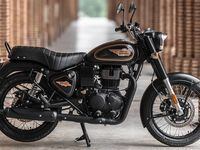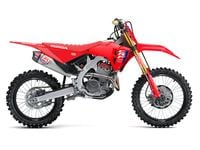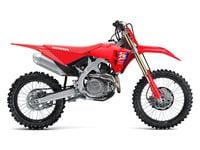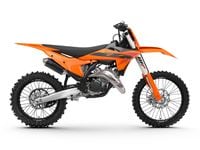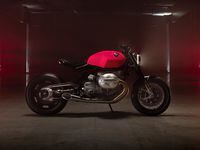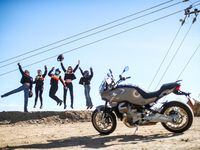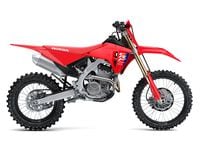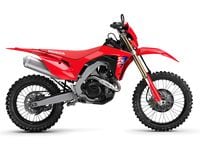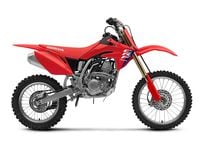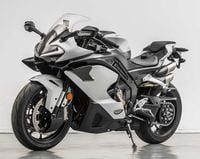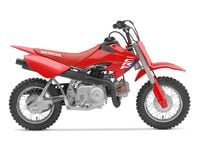The BMW R1200GS adventure bike flagship is just that, a flagship. It’s large, comfortable, capable, and expensive. For these reasons it can also be a bit intimidating and it certainly isn’t entry level. But people love the GS and it’s become the bike BMW is known for. So why wouldn’t the company want to extend its glow to a much more accessible motorcycle for a wider audience.
That bike is the the 2018 G310GS, the long-awaited single-cylinder lightweight adventure machine that takes the company's offerings for multi-surface touring into new low-cost, more accessible territory. The G310GS is largely based on the G310R roadster and therefore shares the same unusual reverse single-cylinder engine with the intake at the front and the exhaust at the rear, as well as many other common parts that help control cost.
The engine design and packaging allows for a lower center of gravity, as well as efficient and direct intake and a shorter exhaust. The small displacement and short pipe mean there’s no need for a heavy, bulky collector box; the catalytic converter is inside the end can. BMW claims 33.5 hp at 9,500 rpm and 20.7 pound-feet at 7,500 rpm.
The bike is small (32.8-inch seat height), easy to manage, and ideal for new riders. Clutch pull is light, gearbox action positive, and the ABS-equipped brakes offer friendly response. Suspension tuning is on the soft side and copes well with bumps, while the tall riding position gives you road presence, allowing you to peer over cars. You have a dominant feeling on the GS, which is unusual for an entry-level bike.
Longer-travel suspension (7.1 inches versus the G310R’s roughly 5.5 inches) and a larger-diameter, off-road-friendly 19-inch front wheel help with this in-command stance on this claimed 370-pounds-wet motorcycle.
The small screen is standard as is the large luggage rack, which can accommodate a factory BMW top box. BMW doesn’t offer panniers in the accessories pack, so you’re stuck with an optional top box and tank bag.
Away from town the small screen offers more wind protection than I was expecting. At 60 mph, the single-cylinder four-valve engine is happy revving at 6,000 rpm. Twist the light throttle, increase the revs to just over 7,500 rpm, and 75 mph is easily achievable—and still the claimed 33.5-hp motor isn’t fazed. However, once above 7,500 rpm you start to notice vibration, especially through the pegs. As the digital speedo passes 80 mph, so do the vibration.
Thankfully the little motor doesn’t mind being flogged. Although BMW quotes 33.5 hp it feels like a little more. If you want to make progress, keep the digital rev counter above 6,000 rpm and don’t be afraid to push all the way to the 10,600-rpm redline. At 55 mph it’s a fuss-free world, and the bike is far roomier than the 310R. Reach to the levers needs to be shorter for smaller riders, but unfortunately the levers are nonadjustable. Additionally the single-cylinder 313cc motor can be a little lumpy at low rpm and the mirrors need to be a fraction wider—small criticisms.
Once off the freeway and into the mountains, I discovered the BMW’s limitations. The handling is user friendly but not sporty. The nonadjustable KYB fork is too soft; it would benefit from more compression and rebound damping. The softness dilutes the feeling from the front Metzeler Tourance tire. The single shock isn’t as spineless but would also benefit from more control. It is also worth noting here the tires are specifically designed with softer sidewalls for the GS.
The brakes—which are reassuring in town—lack bite when used aggressively at speed. There’s plenty of lever travel but a worrying lack of stopping power in extreme conditions. The ABS also isn’t up to the modern standards I’ve become accustomed to. I might’ve been riding the entry-level GS a little too hard considering its intended customer, but even at a moderate pace the handling isn’t up to usual BMW standards. Your experience level and weight (I’m 172 pounds) may give you a different experience.
If you’re new to motorcycling, you’ll have very few complaints because the baby GS is easy to ride and fun. But if you’re thinking of downgrading—like many current maturing BMW GS owners—or alternatively are wanting a second bike for commuting, you’ll find the G310GS’s street handling limited.
And the dirt? The G310GS has been designed to take on light off-road riding. That long-travel suspension and 19-inch front wheel help here; and the ABS can be deactivated. There’s no standard traction control to hinder the fun.
The 310GS isn’t intimidating off-road because it’s relatively light, the power is tame, and if you’re new to dirt, there is even road-biased ABS to help you out. If you simply want to trundle down dirt roads, then the little GS will deliver. Thanks to is small size, it’s easier to handle there than the 1200GS and 800GS.
But more experienced hands will find the bars too low, the mirrors need removing as they get in the way, and there really isn’t the power to get the rear spinning or to lift the front with ease. At increased speed, the suspension starts to bang and complain. Jumps and wheelies should be avoided as it sounds mechanically terrible.
If ridden as its designers intended—as an occasional light off-road bike—then the G310GS scores highly. More experienced riders who want to carry more speed or tackle tough trails will find the bike comes up short, but probably aren’t shopping for this type of bike anyway.
Quality level is impressive. The only real giveaway that this BMW is made in India by partner company TVS is the Bybre brakes; Bybre is Brembo’s Indian sister company. In fact, the majority of parts for the G310GS are sourced or produced in India. But, looking at the bike, most will just presume the little GS was made in Germany like the big 1200GS.
The G310GS is an economical, easy-to-ride step onto the BMW ladder; price is not set, but given the 2018 G310R's $4,750 MSRP, the GS ought to come in under $5,500, though we have to wait for confirmation. The GS an impressive alternative commuter that can also take on some light off-road. More experienced riders contemplating downsizing within the GS range will discover it’s a significant step down—in power, handling, and specification. But new riders and those looking from something lighter and simpler will love the baby GS.
/cloudfront-us-east-1.images.arcpublishing.com/octane/O6HQKNQ3QVHX7AHBHBGC5TPV34.jpg)
/cloudfront-us-east-1.images.arcpublishing.com/octane/M5FCMAIS6BC6XAEHMDBHCORMCA.jpg)
/cloudfront-us-east-1.images.arcpublishing.com/octane/3ZF7EKGEPRCD3AE4XUYTBW5NN4.jpg)
/cloudfront-us-east-1.images.arcpublishing.com/octane/SFIONVIMNBG7PETOCFFSCVX2OA.jpg)
/cloudfront-us-east-1.images.arcpublishing.com/octane/T2KXIR66JZBVFOA25VASURTXH4.jpg)
/cloudfront-us-east-1.images.arcpublishing.com/octane/XRMDYZAR45EITEAQJ6CM4WPLP4.jpg)
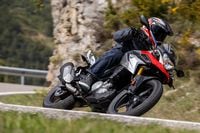
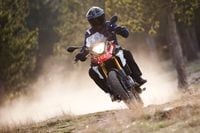
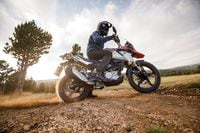
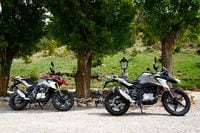
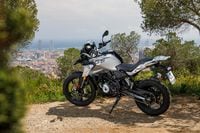
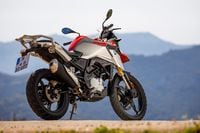
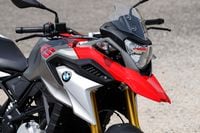
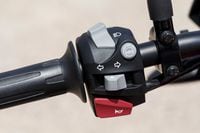
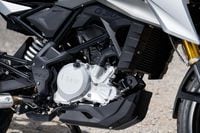
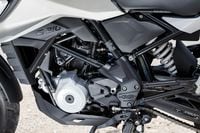
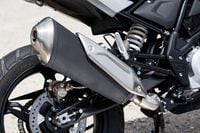

/cloudfront-us-east-1.images.arcpublishing.com/octane/N575KB7BDZDPPJBRLZRG2ANHKI.jpg)
/cloudfront-us-east-1.images.arcpublishing.com/octane/T77HXRXV4NGKDNZODMSEIBRXPE.jpg)
/cloudfront-us-east-1.images.arcpublishing.com/octane/NKMM7V2P3BCSXAV6J56FKK67OU.jpg)
/cloudfront-us-east-1.images.arcpublishing.com/octane/SWQRQV27DNFA7LXGFI7FNFNGOQ.jpg)
/cloudfront-us-east-1.images.arcpublishing.com/octane/GYEXUJBV5JGQLLZNXO7KRVSTEY.jpg)
/cloudfront-us-east-1.images.arcpublishing.com/octane/MCWUSJJVJVG45P7QQG3WOXZR54.jpg)
/cloudfront-us-east-1.images.arcpublishing.com/octane/AJ4EFPH2CRDURDAB5LPEA2V2NE.jpg)
/cloudfront-us-east-1.images.arcpublishing.com/octane/LSDHIL22SZAFFPYLKP5ZXLJSIY.jpg)
/cloudfront-us-east-1.images.arcpublishing.com/octane/SH46HIOX4RELXLXF6AE3SFGH4A.jpg)
/cloudfront-us-east-1.images.arcpublishing.com/octane/JUZ52WFWLJGMNH7PGZNOKP3MUY.jpg)
